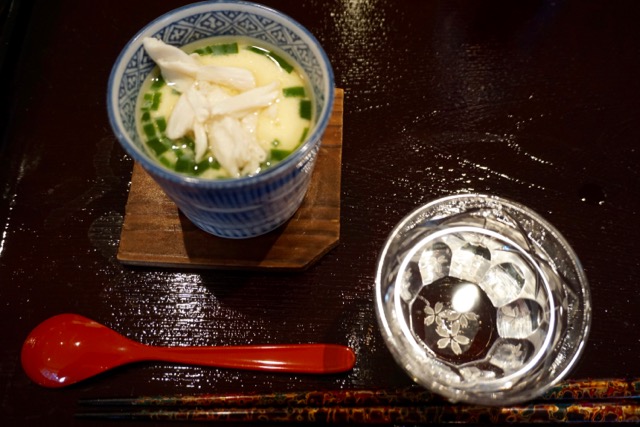Unfortunately, we ate them all before we had a chance to write about them in the blog. Recently, my wife made another batch with some alterations to correct some problems she had with the first batch. The picture below shows the second version of her ricotta filled rolls.
The filling stayed inside the roll this time as shown below.
The major problem my wife had with the first batch of ricotta buns was that even though she followed the recipe the filling was too watery and it was almost impossible to fill the roll. The filling ran out and once it got on the edge of the dough, the bun could not be sealed. In desperation she resorted to using a small bowl (shown at the edge of picture #2). She put the dough into the bowl to form a cup #3. Then she sealed the top like she would a small pie #4. The end result is shown in #5 and #6. this was a somewhat unsatisfactory solution to say the least.
The below is her second attempt. She read a recipe on the internet for a "light and fluffy" cheese cake which used ricotta cheese that had been drained in a colander over night. She thought 'ah ha. Maybe this could work for my ricotta buns.' So she tried it again.
Ingredients:
Filling: 4 cups ricotta drained overnight
2 egg yolks
1/2 cup sugar
1 tsp salt
1 tsp almond extract
1 tsp vanilla
Bread:
2 packages yeast
1/2 cup warm water
1/2 cup scalded milk
1/2 cup sugar
1/2 cup butter
4 eggs
1 tsp salt
4 cups of flour (with more to make the dough the right consistency)
Dirctions for filling: This time she drained the ricotta by putting two layers of cheese cloth in a colander. She added a package worth of ricotta cheese, wrapped it in the cheese cloth, put a small plate on top and weighted it down with several heavy cans. She put a large plate on the bottom to collect the liquid that came out then put it in the refrigerator overnight. The next morning there was about 1/2 cup of liquid that came out of the cheese. This time it was much thicker and easier to work with (#1). She added the eggs yolks, sugar, flavorings and salt and stirred until the mixture was smooth.
Bread: She mixed the milk, sugar, salt and butter and heated it to scald the milk and melt the butter sugar and salt. While it was cooling she proofed the yeast. She added the milk mixture and yeast mixture to the flour and incorporated it. Then she added the eggs one at a time. She added additional flour 1/2 cup at a time until she obtained a soft but workable consistency (#2). She let it rise once then punched it down and assembled the rolls.
Assembly: She made rounds of dough weighing 2 oz each (#3). This time she could could just scoop the filling onto the center of the dough rounds (#4) and pinch up the edges to seal (#5). The end result was a nice little bun (#6). She put them in a buttered pan and let them rise again (#7). She put them in a 400 degree oven for about 18 minutes. The final product is shown in #8.
There is still a room for improvement in this recipe. Probably one more egg yolk is needed in the filling so that it will congeal better while baked. Because of the sugar in the dough, it tended to brown very quickly. It might be better to start with a 400 degree oven for maybe 5 minutes then lower the baking temperature to 350F and cook a bit longer than 18 minutes?
Both versions tasted very good. The sweet vanilla/almond flavor of the ricotta filling was very nice. The bread was very soft and not too sweet. The ricotta filling made it pleasantly moist.
additional notes: My wife made these buns again. This time instead of putting them together in a pan so that they would rise into each other she put them individually on a greased cookie sheet. This is because in the previous batch the buns were slightly soggy where they touched each other. Placed individually on a cookie sheet each bun received heat all around the the result was much better. In addition, she cooked them at 400 degrees for 5 minutes then lowered the temperature to 350 degrees and cooked them for an additional 15 minutes. The end result was very good. They were cooked perfectly.














































